Help students reflect on the social and emotional aspects of the movie and consider how their own emotions work.

Pixar's Inside Out is a movie that's all about feelings, and this makes it perfect for sparking discussions with kids about social and emotional learning. Since the central characters all embody a different emotion, students learn to see parts of themselves or their experiences in each character.
Refreshingly, the movie doesn't make learning about emotions such a heavy-handed endeavor. By getting to know and love each character, students naturally come to understand that emotions are complex, and that we need the entire range of feelings to fully capture the meaning of life experiences.
Things to Know Before You Show Pixar's Inside Out to Your Students
This guide offers two different approaches to teaching Inside Out:
- Show a few specific clips along with discussion questions.
- Show the entire film with a more in-depth lesson plan and handout.
Feel free to use either approach, or even combine the two into one lesson (or an entire unit) based around the movie. If you only have a single class period, showing just a few key clips below might be perfect. If you decide to help students delve deeper into the topic, you might show the entire film and have more extensive discussions over multiple days. Of course, you could also use some combination of the two, adapting the lesson to best suit your class's needs.
Lesson Objectives
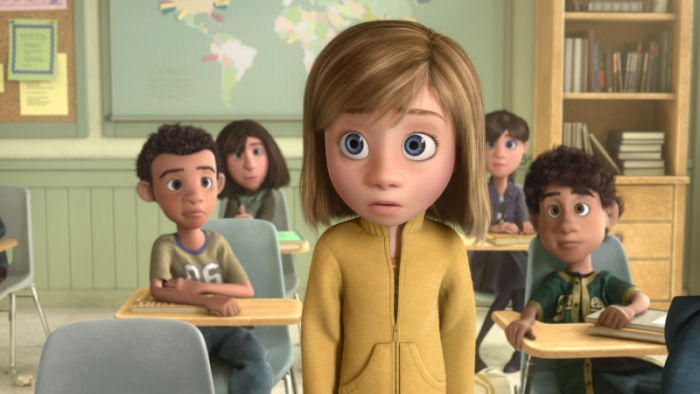
This lesson is designed to align with the CASEL 5 competencies for social and emotional learning as well as various thinking routines from the Harvard Graduate School of Education's Project Zero.
With this lesson, you can help your students:
- Identify their own feelings.
- Think through what it means for emotions to have context.
- Acknowledge the value of having a range of emotions.
- Connect their own personal experiences to the movie's messages.
- Identify their own perspective, and be curious about the perspectives of others.
- Explore the ways they identify their own emotions, including somatically.
- Think about the ways they currently self-regulate, and explore possibilities for other ways.
- Think about helpful versus unhelpful responses to emotions from themselves and others.
Inside Out Clips and SEL Discussion Questions for Students
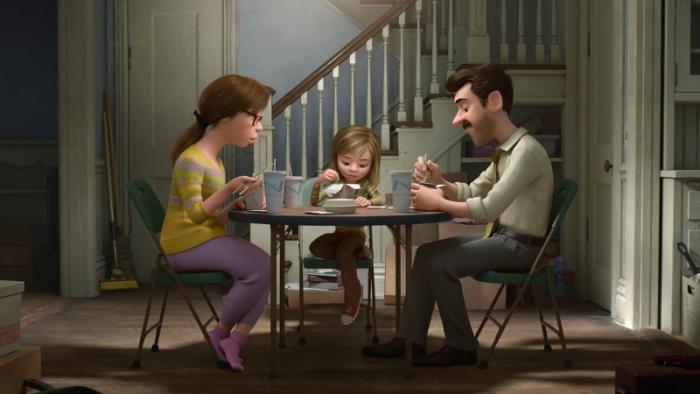
If you only want to show brief parts of the film and discuss them with students, use these helpful clips to get you started. You can also use these in conjunction with the longer lesson plan below.
The time stamps can help you pick and choose your areas of focus. Use as few or as many clips as you see fit, but keep in mind that you may need to introduce the movie's overall plot and talk through some of what happens before or after each clip.
Clip #1: When Dad says Riley can't have dessert if she doesn't eat her broccoli, Anger "blows his top." (3:48-4:06)
- Use this scene to talk about idioms. Have kids draw another emotion-related idiom (ex. cry your eyes out, bent out of shape, spaced out, down in the dumps, etc.).
Clip #2: Joy explains core memories and how they feed the "islands of personality." (4:37-6:38)
- Have students draw and/or write about their core memories and/or their own islands of personality.
Clip #3: Riley sees her new house, and she experiences a range of emotions. (8:43-9:50)
- Discuss: How do emotions influence how Riley feels about the new house? How can she go from feeling sad about her new room to feeling excited about how it will look? The room didn't change -- what did change, and how?
Clip #4: A joyful memory becomes sad, as Riley remembers a moment from the trip. (11:51-12:54)
- As we grow up, sometimes feelings get more complicated. In this scene, a memory that was purely happy becomes sad. In the movie, this is caused by Sadness touching the memory. Ask students: In the real world, why might sadness "touch" a memory?
- Explain to students that this movie was inspired by a real 11-year-old. Her dad wanted to show what it's like to have complicated feelings as you grow up. Ask students: Do you think he did a good job? What would you do differently?
Clip #5: Joy argues with the other emotions about how Riley should feel on the first night after the move, using the phrase, "It could be worse." (16:01-17:14)
- Riley has her own room in a house in San Francisco, which is more than many people have. Ask students: Is Joy right -- could it be worse? Should Riley not feel angry, sad, or scared? Does thinking about how things could be worse change how you feel? Why or why not?
Clip #6: Mom thanks Riley for being their "happy little girl" and wants them both to keep smiling for Dad. (17:10-18:06)
- Riley isn't feeling happy when her mom calls her their "happy little girl." She wants Riley to "put on a happy face." Ask students: Have you ever kept smiling even when you weren't happy? What did it feel like? Did it help the situation? Did it help you?
Clip #7: Joy asks Sadness to stay confined inside of a circle and not participate in Riley's first day at her new school. (20:50-21:27)
- Joy wants to keep Sadness in a tiny circle during Riley's first day at her new school. Ask students: What's the result? In real life, can we keep our emotions exactly where we want them?
Clip #8: Riley starts crying in class as she talks about her home in Minnesota, and Joy tries to prevent a sad memory from becoming a core memory. (22:09-26:08)
- Even though she didn't want to, Riley cries in class. Ask students: How much control do we actually have over our emotions?
Clip #9: Without Joy around, Riley snaps at her parents during dinner, and her dad "puts his foot down." We also get a peek into her parents' emotional headquarters. (26:26-30:08)
- The movie doesn't focus on the parents' feelings or experiences much. Ask students: How do you think Riley's parents are feeling about the move or having new jobs? How do you think they feel about making Riley move? What are the emotions in charge for Mom? For Dad? Why do you think people react to the same situation in different ways?
Clip #10: Mind workers vacuum up faded memories to send them to the memory dump. (34:39-36:04)
- Use this opportunity to briefly talk with students about how the movie uses examples from real parts of brain science, like long-term memory, abstract thought, and dreaming. Another example is the brain "getting rid of" unused information.
- Have students pick one element of brain science to represent in a drawing (or any other type of creative output). Some other examples include learning, processing the senses, and daydreaming, among many others.)
Clip #11: While talking to her friend from Minnesota, Riley suddenly feels angry. (36:00-36:36)
- Ask students: After Riley slams her computer, how do you think her friend felt? When we lose control of our feelings and do something that hurts someone else, we may not have meant to hurt them. If we didn't mean to, are we still responsible? What can we do next?
Clip #12: Joy, Sadness, and Bing Bong take a shortcut through Abstract Thought. (41:40-43:35)
- An abstract thought is something that's not concrete -- or not easy to explain -- like love or loneliness. Ask students: How did the movie makers show us what abstract thought is?
- Have students take an abstract idea and show it in a concrete way in a drawing (or any other type of creative output).
Clip #13: Riley's hockey tryout is very frustrating and upsetting. (45:16-46:50)
- Ask students: Riley is good at hockey and usually enjoys it, so why are the tryouts so hard?
Clip #14: Both Joy and Sadness try to comfort Bing Bong when his wagon is thrown in the dump, and Sadness is the one to succeed. (47:04-49:39)
- Having empathy is about understanding what someone else is feeling. Ask students: Why does Bing Bong respond to Sadness but not Joy?
- Ask students: Why are movies a great way to see other people's perspectives and practice using empathy?
Clip #15: Joy and Bing Bong are stuck in the memory dump. Joy feels sad herself (and realizes that emotions work together), and Bing Bong sacrifices himself to make sure Joy can escape. (1:06:27-1:13:35)
- Ask students: What does Joy realize as she holds Riley's memory the moments after losing the hockey game? Why does Bing Bong decide to let himself fade away?
- Introduce students to the idea of nostalgia. Ask them: When you think about happy memories from when you were little that may be fading, how do you feel?
Clip #16: Riley's parents realize she's gone -- Riley struggles with her decision, returns home, then shares her sadness with her parents. (1:13:40-1:23:54)
- Explain that Riley choosing to run away and try to get back to Minnesota is one way to deal with her feelings. Then ask students: What's the impact of that choice? What are some other ways she could have expressed her feelings?
Inside Out SEL Lesson Plan and Graphic Organizer
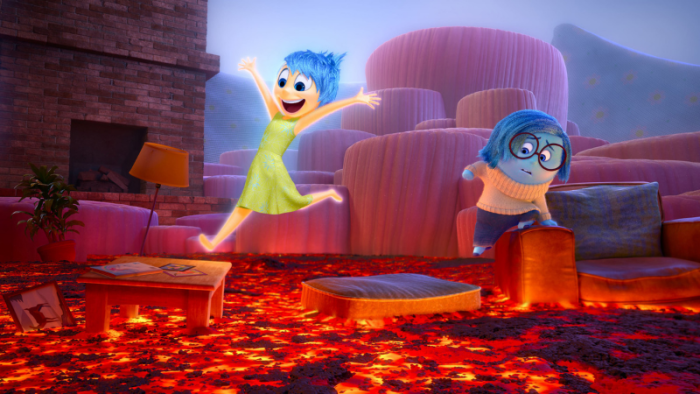
Begin by introducing the movie and give students some context about why it’s worth thinking about more deeply. A lot of students may have seen the movie already since it came out in 2015, so make a strict "If you know it, don't blow it" rule to prevent spoilers. You might also want to discuss some of the learning objectives or the concept of active viewing.
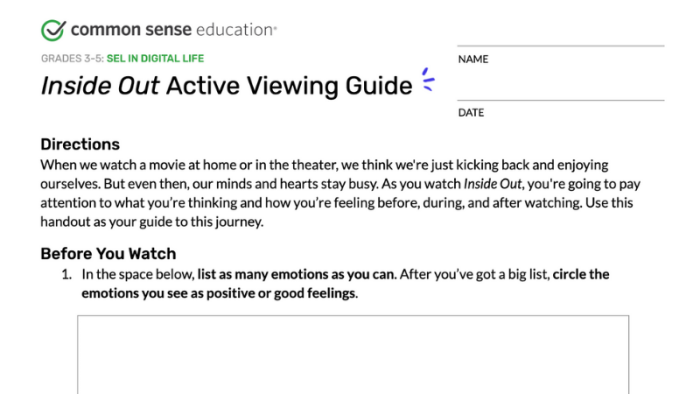
Before the Movie
Hand out copies of the Inside Out Active Viewing Guide, and give students a few minutes to finish the Before You Watch question.
- Students will be listing emotions and circling the emotions they see as "good" or "positive." Importantly, they'll return to this after the movie and reflect on it in the last question. It's essential that students do both the first and last questions on the handout so as not to reinforce misconceptions about emotions or feelings being inherently good or bad.
- For a more interactive experience, you can have kids create a "positive emotion" word cloud using Kahoot or another tool of your choice.
Before you start the movie, explain the next activity that students will complete while they watch. They'll need to pick a moment that has great use of color and/or music, and make a sketch of it.
During the Movie
Make sure to pause periodically at key scenes throughout the movie (feel free to use the clips outlined above in this article). As you pause and discuss, give students time to do some sketching.
After the Movie
Have students complete the After You Watch activities.
- Students can write down their responses individually, then discuss in pairs, small groups, and/or as a whole class.
Discussion Questions:
After the movie ends, it's important to help students reflect on what they've seen and talk about what they're thinking. You can discuss anything that feels particularly relevant to your students. The scenes and discussion questions listed earlier in this article can be a good starting point, but feel free to guide your class discussion as you see fit.
Creative Extensions
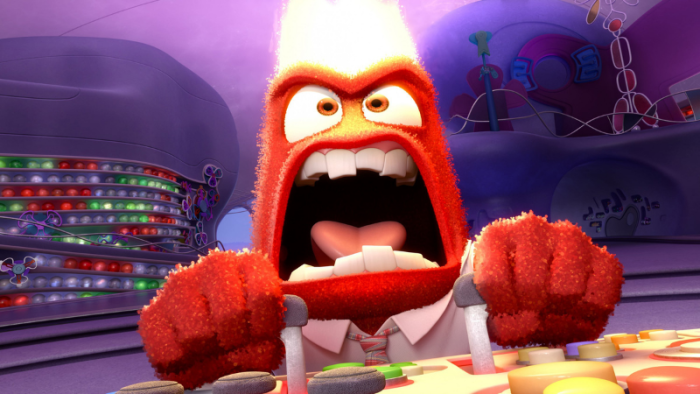
- Ask students to imagine what their own memory storage system is like: How are their memories categorized? Where do their memories all go? What does the system look like?
- Have students think of a memory they have that started out one way but feels a different way now. Using color, create something that show the feelings they have from this memory, and how they've changed over time.
- Watch another movie that explores similar themes but from a different cultural perspective. Invite students to consider how these movies tackle universal themes, but in different ways given who they represent and how (e.g. the family in Inside Out is a contemporary upper-middle-class White family in the city, and the family in My Neighbor Totoro is Japanese and lives a more modest life in rural, post-war Japan).







